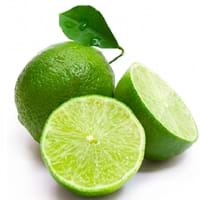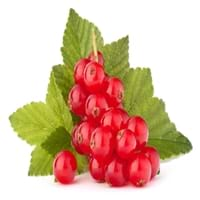Health Benefits
Arthritis treatment, Cholera treatment, Gout treatment, Heart care, Piles treatment, Scurvy treatment
Cancer prevention, Gout treatment, Heart care, Regulation of heart rate, Treatment of rheumatism
General Benefits
Cures fever, Digestive aid, Eye care, Maintains healthy cholesterol level, Treatment of common cold
Anti oxidant properties, Controls blood pressure, Cures fever, Digestive aid, Healing of wounds, Helps in weight loss, Strengthens bones
Skin Benefits
Anti-aging benefits, Skin rejuvenation, Treatment of acne, Treatment of dark spots
Brightens and lightens complexion, Reduces wrinkles, Treatment of acne
Hair Benefits
Promotes longer and healthier hair, Treatment of dandruff
Protects hair
Allergy Symptoms
Breathing difficulty, Coughing, Eye irritation, Hives, Inflammation, Nasal congestion, Runny nose, Skin rash, Wheezing
Abnormally rapid heart rate, Anaphylaxis, Breathing difficulty, Hives, Itching, Swallowing difficulties
Side Effects
Chances of sunburn
Possibly unsafe during pregnancy
Best Time to Eat
Along with meal, Best to drink warm water with lime on an empty stomach, Don't consume at night and before bed
Best if taken as a breakfast (or empty stomach), As a snack in the late afternoon, Don't eat after meal, Morning time (before lunch)
Vitamin B5 (Pantothenic Acid)
Vitamin C (Ascorbic Acid)
Vitamin K (Phyllochinone)
Calories in Fresh Fruit with Peel
Not Available
Calories in Fresh Fruit without Peel
Not Available
Calories in Frozen Form
Not Available
Not Available
Calories in Dried Form
Not Available
Calories in Canned Form
Not Available
Type
Citrus, Tree fruit
Berry
Season
All seasons
Summer
Varieties
Key lime, Persian lime, Kaffir lime, Desert lime, Palestine Sweet Lime, Mexican Sweet Lime, Mary Ellen Sweet Lime
Rovada, Stanza, Red Lake, Junifer and Jonkheer van Tets
Inside Color
Light Green
Red
Taste
Acidic, Sour
Sour, Tart
Soil Type
Clay loam, Sandy loam
Moist, Well-drained
Climatic Conditions
Sunny, Warm to hot climate
Cold
Facts about
- Lime is the called as the powerhouse of flavors.
- Fresh lime juice is so acidic that it can dissolve concrete.
- Limes are more fragrant and acidic than lemons.
- Persian limes are almost seedless and thorn less.
- The albino version of red currants known as white currants, are often sold as different fruit.
- Red currant tea is healthy substitute for coffee.
- There are more than 150 varieties of red currants.
Top Producer
China
Russia
Other Countries
Argentina, Brazil, India, Mexico
Belgium, France, Germany, Ireland, Italy, Netherlands, Poland, Portugal, Scotland, Spain, Sweden, United Kingdom
Top Importer
United States of America
Germany
Top Exporter
Mexico
Russia
Botanical Name
Citrus aurantifolia
Ribes rubrum
Synonym
not available
Not Available
Subkingdom
Tracheobionta
Tracheobionta
Division
Magnoliophyta
Magnoliophyta
Class
Magnoliopsida
Magnoliopsida
Order
Sapindales
Saxifragales
Family
Rutaceae
Grossulariaceae
Species
C. aurantifolia
R. rubrum
Generic Group
Citrus fruit
Saxifrage
Difference Between Lime and Red Currant
We might think that Lime and Red Currant are similar with respect to nutritional value and health benefits. But the nutrient content of both fruits is different. Lime and Red Currant Facts such as their taste, shape, color, and size are also distinct. The difference between Lime and Red Currant is explained here.
The amount of calories in 100 gm of fresh Lime and Red Currant with peel is Not Available and 56.00 kcal and the amount of calories without peel is 30.00 kcal and Not Available respectively. Thus, Lime and Red Currant belong to Low Calorie Fruits and Low Calorie Fruits category.These fruits might or might not differ with respect to their scientific classification. The order of Lime and Red Currant is Sapindales and Saxifragales respectively. Lime belongs to Rutaceae family and Red Currant belongs to Grossulariaceae family. Lime belongs to Citrus genus of C. aurantifolia species and Red Currant belongs to Ribes genus of R. rubrum species. Beings plants, both fruits belong to Plantae Kingdom.









